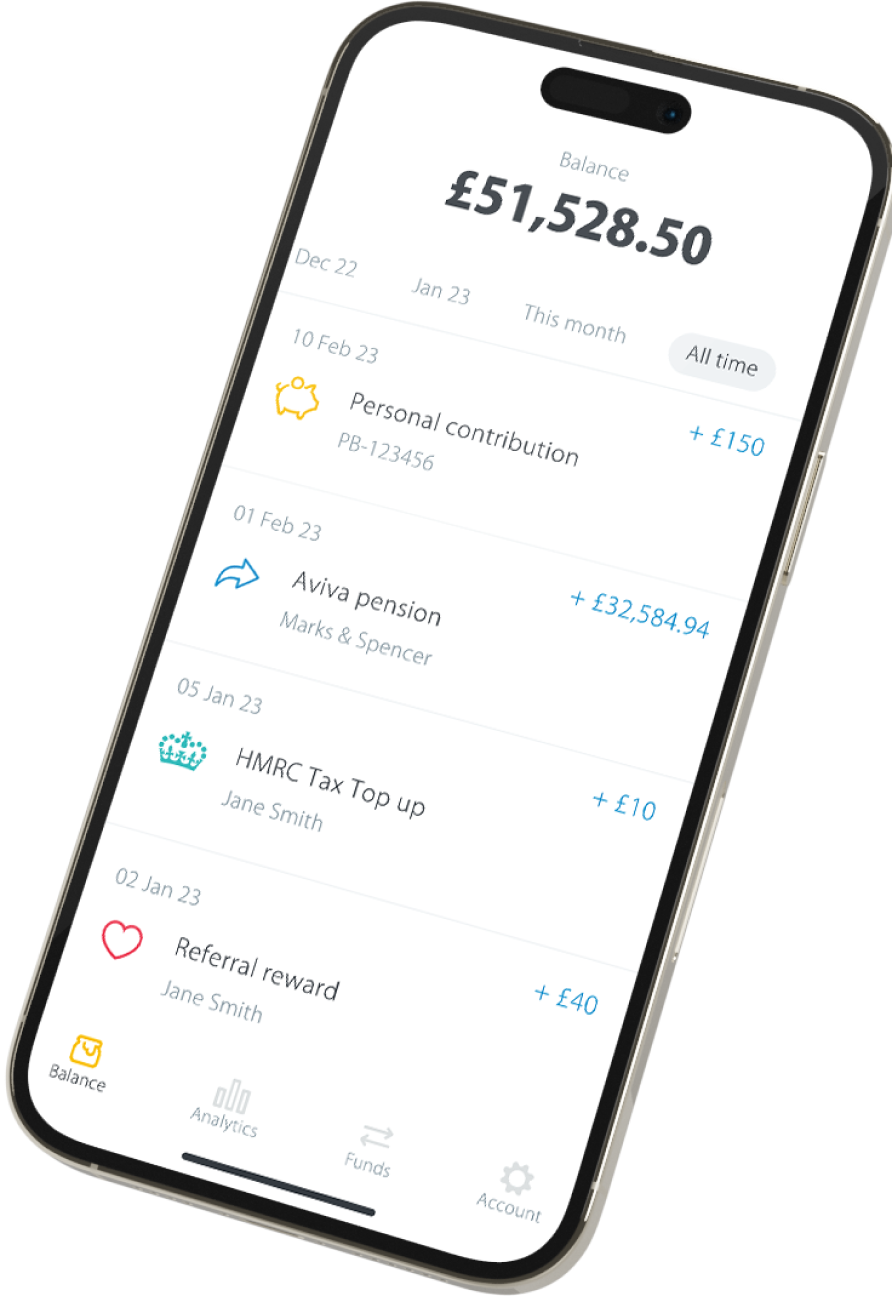Making pension contributions
A pension plan is a tax-efficient product for retirement saving. When you save into a pension, you can currently get tax relief on gross contributions up to _annual_allowance or 10_personal_allowance_rate of your income.
Why save into a pension?
Saving into a pension is one of the key ways to make sure you’ve got enough money for retirement. This is particularly important because the maximum State Pension is currently only _state_pension_annually a year (_current_tax_year_yyyy_yy), and it may come under further pressure in the future.
Pensions are also increasingly flexible thanks to new pension legislation, which gives you more options for what to do with your money when you reach retirement.
The benefits of saving into a pension
Unlike most other saving products, pension plans can be boosted by employer contributions and by money from the government in the form of tax relief.
1. Employer contributions
New Auto Enrolment pension rules mean that your employer must offer you a workplace pension and they must contribute to it as long as you’re making contributions. This effectively means that with a workplace pension plan you get free money from your employer towards your retirement.
2. Tax relief
Saving into a pension plan, whether it’s workplace or personal pension means that the government contributes too, in the form of tax relief. For every £100 paid into a pension by a basic rate taxpayer, the government pays in £25, making the total contribution _lower_earnings_limit. The tax free limit on tax relievable pension contributions is currently set at _annual_allowance per year or 10_personal_allowance_rate of your salary (whichever is lower).
If you’re a higher rate taxpayer you can claim a further _corporation_tax tax top up through your tax return, rising to 31% for those who pay the top rate of tax. If you’re a non-earner or earn less than _low_earner_annual_allowance_gross annually, you can contribute up to _low_earner_allowance_annual_net net to your pension, so that once tax relief is added your total annual contribution is _low_earner_annual_allowance_gross.
3. No inheritance tax
Pensions also fare well compared to other savings products when it comes to inheritance tax. If you die before the age of 75, your pension can usually be passed on as a lump sum without inheritance tax deductions.
4. Diversified
Usually, when you save into a pension plan your money will be invested in a professionally-managed portfolio, spreading your assets across a range of funds. This is a good way of managing risk, as it’s unlikely that all of the asset types will drop in value at the same time.
How much to save into a pension
How much you save into your pension plan depends on several things including how many years you’ve got until retirement, how much you can afford to contribute and your ideal retirement income.
When you’re deciding on your level of pension contributions, you should think about the following:
- The balance of any existing pensions.
- Number of years left working.
- Your planned retirement age.
- Your ideal retirement income.
A rough rule of thumb is that you should try to pay _ni_rate of your annual salary into your pension. If you’ve got some money left over each month then your pension is a good place to put it, especially because the tax relief makes a pension more attractive than other saving products. It’s a good idea to increase your pension contributions when your salary increases.
{{main-cta}}
What level of pension contributions do most people make?
The most recent figures from the government show an increase in enrolment and contributions across private sector pension schemes. In 2020 around eight in ten employees have a workplace pension, compared to five out of ten in 2012. There has been a consistent increase in adults below State Pension age actively contributing to a private pension.
- Workplace contributions have increased too - from a 5% to 8% total - with employees contributing 5% and employers contributing 3% towards their workplace pension.
How to save into your pension
If you’re paying into a workplace pension, your employer will usually deduct your contributions from your salary before they pay your wages.
If you’ve got a personal pension, you can make monthly or one-off contributions into your pension plan by setting up an Easy bank transfer or by standing order.
Open a PensionBee plan and you can easily save money into your pension by setting up regular or one-off contributions online. Your employer can also choose to pay contributions into your plan.
Join PensionBee now and take control of your pension saving.
(* Source: Personal Pensions Statistics)
Risk warning
As always with investments, your capital is at risk. The value of your investment can go down as well as up, and you may get back less than you invest. This information should not be regarded as financial advice.
Last edited: 06-04-2025


Be pension Confident!
Be pension Confident!




- Sign up in minutes
- Transfer your old pensions into one new online plan
- Invest with one of the world’s largest money managers
- Pay just one simple annual fee












